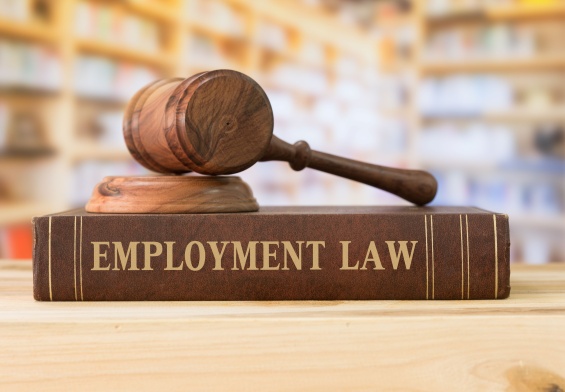Phased retirement is a structured transition from full-time work to full retirement. Instead of stopping work all at once, employees reduce their working hours over time while continuing to earn income and, in some cases, receiving partial retirement benefits.
Why Consider Phased Retirement?
Have you ever thought about what it would feel like to stop working overnight? A sudden shift like that can be jarring and overwhelming. Phased retirement offers a middle ground, allowing individuals to adjust at a steady pace. It provides financial stability, keeps retirees professionally engaged, and gives employers time to transfer knowledge to younger employees.
Phased Retirement Definition and Meaning
A phased retirement program is a structured plan that balances employee financial security with employer staffing needs. Some programs allow retirees to continue working in a limited capacity, while others involve mentoring or training responsibilities. The goal is to provide a smoother retirement experience for employees and employers.
How Phased Retirement Works
Phased retirement programs depend on the industry and employer, but they typically follow a step-by-step process:
- Employees reduce their work hours from full-time to part-time while keeping a portion of their salary.
- They receive partial retirement benefits, helping to supplement their reduced income.
- Many take on mentorship or consulting roles, transferring their expertise to younger employees.
- After a set period, they stop working, transitioning to full pension benefits and ending their employment.
For example, in the federal government’s phased retirement program, employees work half-time and receive 50% of their retirement annuity. This approach allows them to maintain income while still accruing pension benefits, leading to a higher final retirement payout.
Some employees ease into retirement by shifting to consulting roles, taking on seasonal work, or sharing job responsibilities with a successor. Others negotiate a gradual reduction in work hours over several years, making the transition less abrupt. These phased retirement options provide flexibility for employees and retention of institutional knowledge for the businesses employing them.
Phased Retirement Examples
Phased retirement can take many forms depending on the employer and industry. Some employees opt to reduce their weekly hours, keeping their core responsibilities while stepping back over time. Others take on project-based work or seasonal roles, so they stay engaged while enjoying more personal time.
In certain fields, job-sharing arrangements are a common phased retirement option. A senior employee may train a younger colleague to take over their role while working reduced hours or from home. This makes the transition smooth for both the retiree and the company.
Consulting roles offer another solution for employees that want to stay involved in their industry without sticking to a set schedule. Retirees can provide expertise on an as-needed basis, allowing them to stay active in their careers while enjoying greater flexibility.
Phased Retirement Advantages
Phased retirement provides advantages for both employees and employers.
For employees, it offers financial security while allowing a gradual adjustment to life after full-time work. Continuing to earn income reduces financial stress and allows for a smoother transition into retirement. Some phased retirement programs also enable employees to keep benefits like health insurance, making the shift easier.
Employers can leverage phased retirement as a strategic workforce planning tool. Retaining experienced employees longer helps ensure knowledge transfer to younger workers, reducing the impact of sudden retirements. This also reduces hiring and training costs, making workforce transitions smoother.
Phased Retirement Disadvantages
While phased retirement offers many benefits, there are some potential drawbacks.
Employees who opt for phased retirement may receive reduced immediate retirement benefits since working part-time affects pension calculations. Social Security benefits may also be impacted if earnings exceed the income limit before reaching full retirement age.
Another challenge is that not all employers offer phased retirement programs. While government agencies and large corporations often have structured plans, many smaller businesses don’t. In these cases, employees may need to negotiate individual arrangements, which could come with restrictions on pay, benefits, or job responsibilities.
For employers, phased retirement requires careful planning. Keeping retirees on payroll while hiring new employees can increase labor costs in the short term. Scheduling can also be a challenge, as managing workloads for employees in transition requires flexibility. Careful consideration of these factors is necessary for employers to determine if their phased retirement programs are sustainable.
Who Is Eligible?
Eligibility for phased retirement programs depends on employer policies and retirement plans.
In the federal government, phased retirement is available to employees who have worked full-time for at least three years and meet specific age and service requirements. Participation is voluntary and requires mutual agreement between the employee and employer.
In the private sector, phased retirement eligibility varies. Some companies offer structured programs, while others handle it on a case-by-case basis. Employees considering phased retirement should check with their HR department and review their pension plans. In cases where no formal program exists, individuals may need to propose their own phased retirement arrangement.
Key Considerations Before Choosing Phased Retirement
Employees should look at several key factors to decide if phased retirement is right for them, and consulting the company’s outside general counsel or other corporate legal services could be a big help here.
Understanding the financial impact is a necessity. Employees need to determine whether a reduced salary and partial retirement benefits will cover their living expenses. Social Security eligibility should also be reviewed, as phased retirees who claim benefits before full retirement age may see reductions.
Employer policies are another important consideration. Not all workplaces offer phased retirement, and those that do may impose restrictions. Employees should also think about their long-term retirement goals—whether they plan to transition fully in a few years or continue working in a limited capacity. Health insurance coverage, pension adjustments, and work-life balance should all be factored into the decision.
How to Get Started
If you’re considering phased retirement, discuss your options with HR or your employer. Some companies have structured programs, while others handle requests on a case-by-case basis. Understand eligibility requirements and potential benefits before making a decision.
Consult a financial advisor to assess how phased retirement will affect long-term income, Social Security, and pension benefits. Employees should calculate whether their retirement savings and expected benefits will provide enough financial security.
If possible, test a reduced work schedule before committing to phased retirement. This allows employees to gauge whether the arrangement meets their needs while maintaining financial stability. This way, you guarantee a smooth transition into retirement while keeping options open.
Is Phased Retirement Right for You?
Phased retirement offers a structured way to transition out of the workforce while maintaining financial stability. By continuing to work in a reduced capacity, retirees can enjoy a smoother adjustment to retirement without the financial strain of an abrupt exit.
For employees, the key to success is understanding eligibility, financial impact, and employer policies. Taking the time to explore different phased retirement options can lead to a more secure and flexible transition into retirement. If you’re considering phased retirement, start by discussing your options with your employer or financial advisor to determine the best path forward.
Resources:
https://www.opm.gov/support/retirement/faq/phased-retirement/




